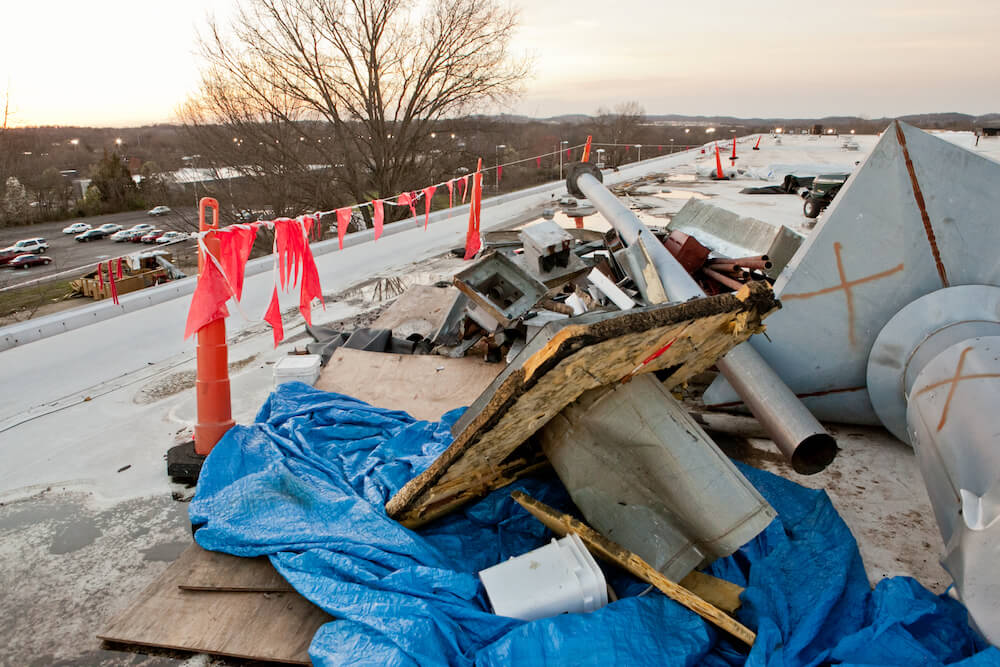With the exception of an act of nature, roofs rarely open up and allow water to pour in without warning. Most leaks begin small, getting worse with time as more and more water seeps into the roofing system. A commercial roof will “communicate” with the people inside, offering signs of stress. These are the 5 indoor roofing red flags to keep an eye on.
1. Water, Water Anywhere
The number one leaky roof red flag is the presence of water anywhere it should not be. The location of the water can be misleading, and may not be an accurate indication of where the water is coming from. Don’t assume that water stains near a window are caused by the window itself. Water travels on the path of least resistance, and that means that moisture from the roof can run down walls and show up nearly anywhere in the building.
2. Moisture On The Ceiling
Condensation can accumulate on the ceiling tiles for many reasons and may not always indicate a roof leak. Sometimes it can be the result of a heating, ventilation, air conditioning, or plumbing issue. However, if it occurs on the top floor, odds are it’s caused by a roof leak. Any time condensation appears on the ceiling, the cause should be immediately investigated.
3. Mold and Mildew
Mold and mildew require water to grow. If mold or mildew are spotted on or behind walls, this is a major roofing red flag. Again, this could be the result of a plumbing or ductwork issue, but in many cases of mold, water is likely getting in between the walls through the roof.
4. Rot In an Unused Area of the Building
Some buildings have restricted or unused areas that are not regularly visited by employees or tenants. When a section of a building is not populated, it can be a while before signs of leaks are found, which can cause rot. If rot is present in a little-used section of the building, the source may be the roof.
5. Irregular Roofing Inspections
When was the last time your roof was inspected by a professional roofing contractor? If no one on the facilities team can recall, or if it’s been more than a year, the building is at high risk for roof leaks, especially if that roof is more than a few years old.
Proactive Indoor Searches For Signs of Outdoor Damage
Leaks are often not spotted in their early stages, especially if you’re not conducting regular inspections and roofing maintenance check-ups. Typically, the first time a roofing red flag is noticed occurs when water is already dripping or pouring down into a building.
When facilities teams conduct inspections of the property, they should create a checklist for their examinations that includes:
-
- Looking for signs of moisture on the ceiling.
- Examining areas around windows and door openings for wetness, warp or rot.
- Scanning for visible signs of mold or mildew.
- Studying the roof deck, if visible, for signs of moisture.
Water leaks damage more than just the roof. If a leak is not detected early, or if it is not repaired in a way that corrects the damage done by the water, it can lead to widespread mold and mildew, drywall may need to be replaced, carpeting removed, window frames rebuilt, etc. These residual repairs can significantly add to the total cost of the repair.
The best way to keep water from getting inside is to ensure the roof is an impregnable barrier against the elements. Working with a trusted partner and expert can help keep water outside, where it belongs.

